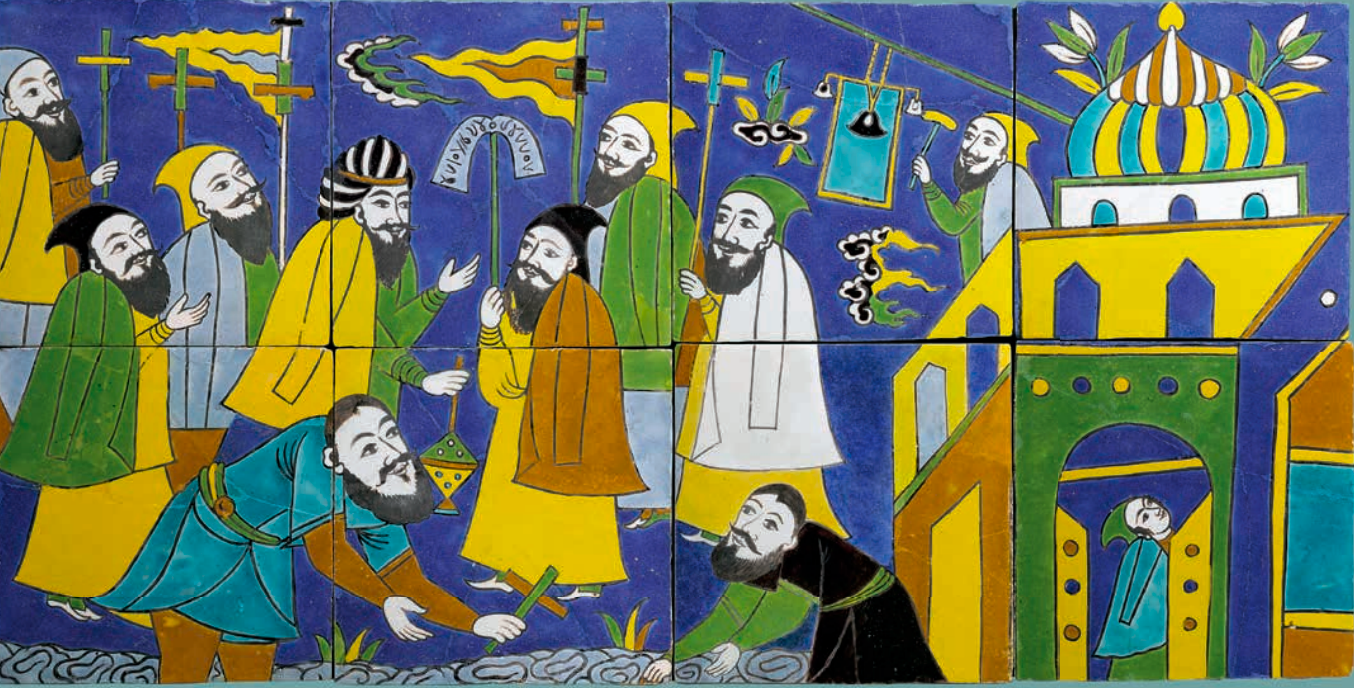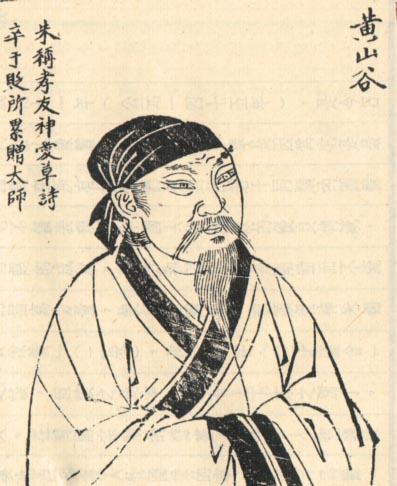
Since the opening of the Shanghai Museum (People's Square Pavilion) in 1996, its Calligraphy and Painting Halls are currently the only permanent exhibition halls at home and abroad that systematically display the general history of ancient Chinese calligraphy and painting, and have been highly praised by the cultural circles.
The Paper learned that from tomorrow, the permanent general history exhibitions of the Chinese Calligraphy Hall and the Chinese Painting Hall of the Shanghai Museum will be renewed. Importantly, this round of renewal is also a permanent "farewell exhibition" of calligraphy and painting that has lasted for more than 20 years since the opening of Shanghai Expo (People's Square Pavilion), and the exhibition period is from April 15 to October 8, 2023. Afterwards, the permanent exhibition of the general history of calligraphy and painting will be moved to the East Hall of Shanghai Museum.
The relevant person in charge of the Shanghai Museum told The Paper that over the past 27 years, in addition to the themed exhibitions and special exhibitions, the Shanghai Museum has displayed about 600 famous calligraphy and painting works to the audience in the permanent exhibition of calligraphy and painting.
It is reported that this "farewell exhibition" will have many fine calligraphy and painting works that have made their debut or have not appeared for a long time. In the Calligraphy Museum of Chinese Dynasties, the key exhibits include Su Shi in the Northern Song Dynasty "Running Script Appreciation to the Master's Dissertation Scroll", Mi Fu in the Northern Song Dynasty "Participating in Political Posting Pages", etc. The paintings are exhibited for the first time, including the "Lianshe Tujuan" in the Southern Song Dynasty, and Zhao Mengfu's in the Yuan Dynasty. "Orchid Bamboo Stone Scroll" and so on.
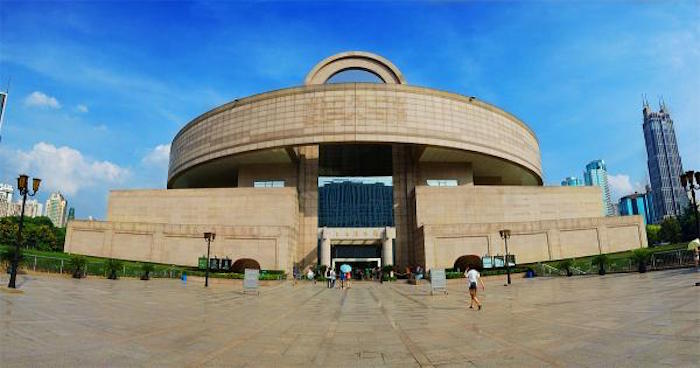
People's Square Building of Shanghai Museum

Historical Pictures of Shanghai Museum's Permanent Exhibition of Calligraphy and Painting The Paper
Regarding the permanent exhibition of the Shanghai Museum, Ling Lizhong, director of the Painting and Calligraphy Department of the Shanghai Museum, told The Paper today that there are only a handful of museums at home and abroad that have permanent exhibitions of ancient Chinese calligraphy and painting. Important, its significance lies in its popularization. A systematic and representative collection support is the key element of opening a permanent exhibition of calligraphy and painting, because the Museum of Chinese Painting and Calligraphy of Past Dynasties in Shanghai Expo is a general history exhibition, not a special exhibition, such as the calligraphy of ancient dynasties The traces should start from the "two kings" of the Eastern Jin Dynasty, and there must be works of representative figures in all dynasties. The Shanghai Museum has a relatively complete context in this regard. Chinese paintings and calligraphy of past dynasties collected by the museum.”
Ling Lizhong said, "The exhibits in this 'Farewell Exhibition' are quite substantial, and they have appeared in the National Treasure Exhibition." In addition, there are also works such as Zhu Xi's "Run Script November 7th Post Page" and Zhao Ji's "Regular Script Thousand-Character Essay", which are all famous works. "

Su Shi's "Running Script Appreciation to Teachers' Papers and Posts", paper copy, 27 cm in length and 96.5 cm in width, collected by Shanghai Museum.

Su Shi's "Running Script Appreciation to Teachers' Thesis Volume" (partial)
As for the last update of the painting hall, Shanghai Bo said that there will be many famous products, "In the painting hall, there is a famous "Lianshe Picture Volume" in the Southern Song Dynasty, a "Astrology Map" in the Five Dynasties, and a painting by Zhao Mengfu in the Yuan Dynasty. "Orchid, Bamboo and Stone Picture Scroll", Zhang Wo's "Nine Songs Picture". Of course, there are also some new works that have never been exhibited, such as Yuan Xiayong's "Tengwang Pavilion Picture Page", and the works of the Four Kings are also worth watching. In addition, for the "Farewell Exhibition" of the Painting Museum, this exhibition reduces the number of exhibits on the vertical scrolls, and will present many albums and hand scrolls that appeared for the first time in the counter, such as the albums of Shi Tao and Xiao Yuncong, the hand scrolls of Xu Wei, etc. "
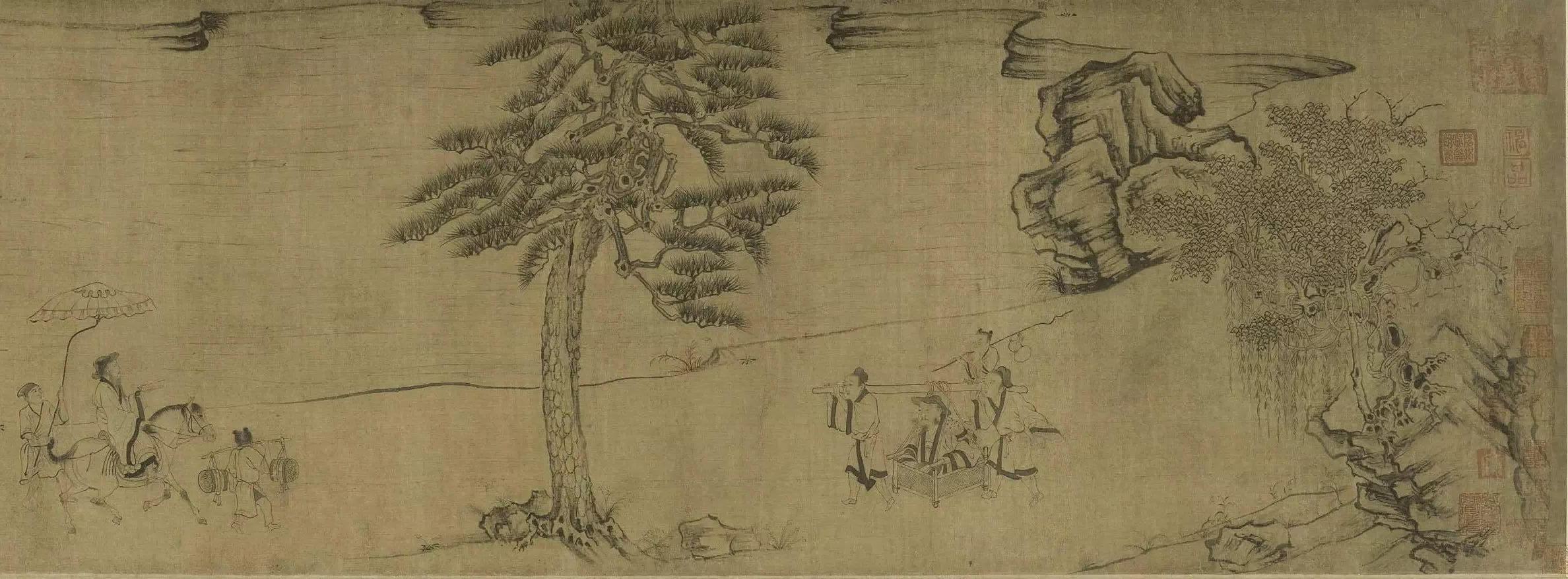
Anonymous "Lianshe Picture Volume" in the Southern Song Dynasty (partial)

Yuan Zhao Mengfu's "Orchid, Bamboo and Stone Scroll"
The Permanent Exhibition of Painting and Calligraphy at the Shanghai Museum has continued since its opening in 1996, with a history of nearly 30 years. Ling Lizhong said that he also entered the museum after the establishment of the People's Square building and witnessed the renewal history of the permanent exhibition. "This is an exhibition that has lasted for 27 years. I am actually a little bit reluctant to say goodbye to it. So We also took the last update very seriously."
Regarding the regular update of the permanent exhibition of calligraphy and painting, Ling Lizhong said, "Considering that the cultural relics of calligraphy and painting are relatively fragile and need to be changed frequently, it is obviously not enough to have only one set of general history exhibits. The permanent exhibition before the museum opened in 1996 , We are preparing three sets of calligraphy and painting schemes for rotation. From the data point of view, in the past 27 years, excluding theme exhibitions and special exhibitions, Shanghai Bo has displayed about 600 famous calligraphy and painting works to the audience in the permanent exhibition of calligraphy and painting."
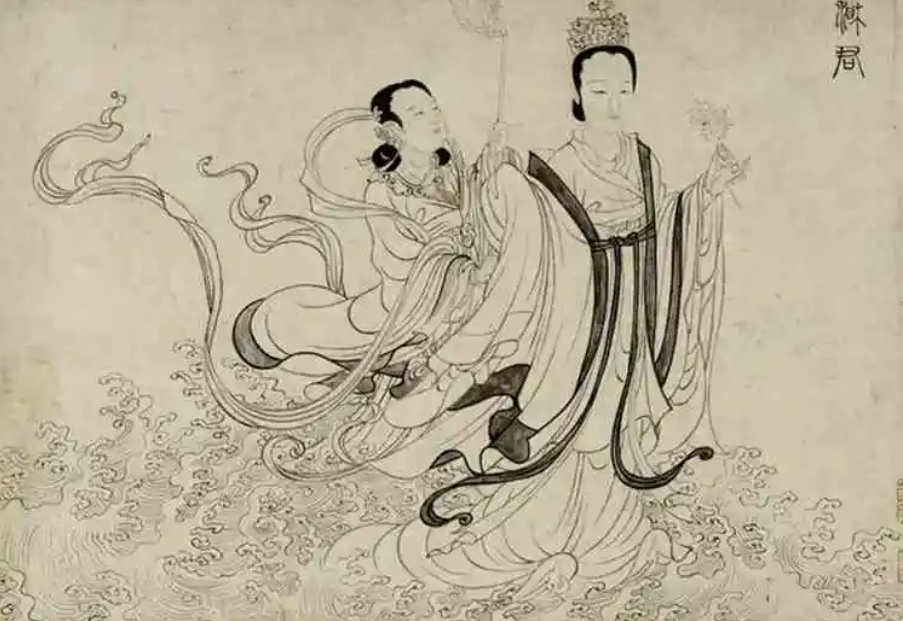
"Nine Songs" by Zhang Wo (detail)
After 2013, the Shanghai Museum considered the future permanent exhibitions in the east hall and the continuous combing and accumulation of painting exhibits. We are also excavating new collections of paintings. In the future, our goal for the East Museum is to have 6 sets of plans, so that the dormant period of each round of cultural relics will be longer, and we will have the confidence to hold permanent exhibitions." Ling Lizhong said.
Regarding the Shanghai Expo East Pavilion and the People’s Square Pavilion, the person in charge of the Shanghai Museum said in an exclusive interview with The Paper that more than 20 years ago, the Shanghai Museum chose the People’s Square to build a new museum. The advanced concept almost created an era of museum construction. Compared with the main building, the Bodong Pavilion has both inheritance and innovation. For example, the outstanding feature of the Shanghai Expo People's Square building in terms of architectural modeling is the combination of a square base and a circular overhang, which has the meaning of "the sky is round and the place" in China. The main building of the east building is a rectangular block, which is embedded with a circular rotating ramp, which also reflects a combination of square and circle.
Calligraphy
There are 35 works of calligraphy and inscriptions in the new exhibition of the Calligraphy Museum, including 12 works exhibited for the first time and 9 works that have not been seen for a long time. The works exhibited for the first time mainly include:
Shimen Inscription Book of Regular Script by Wang Yuan of the Northern Wei Dynasty
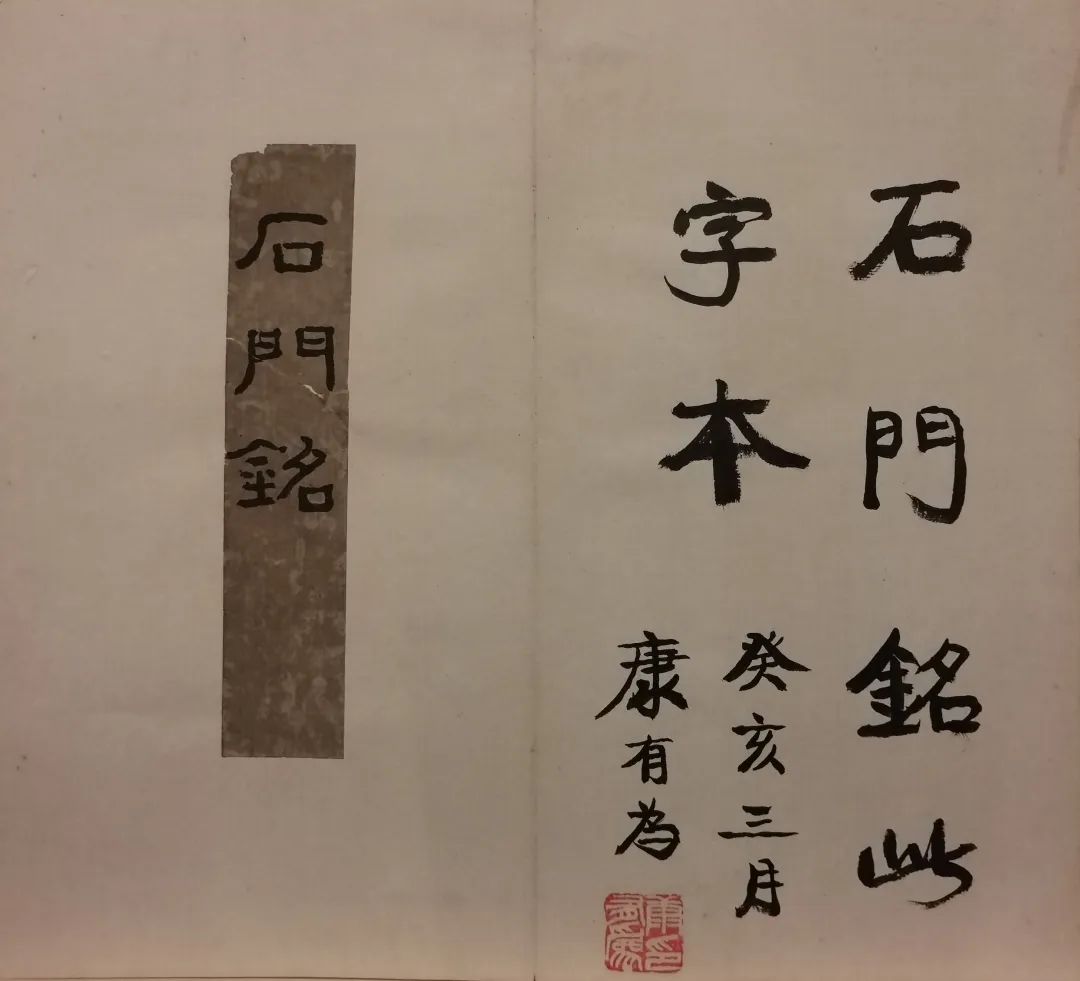
Shimen Inscription Book of Regular Script by Wang Yuan of the Northern Wei Dynasty
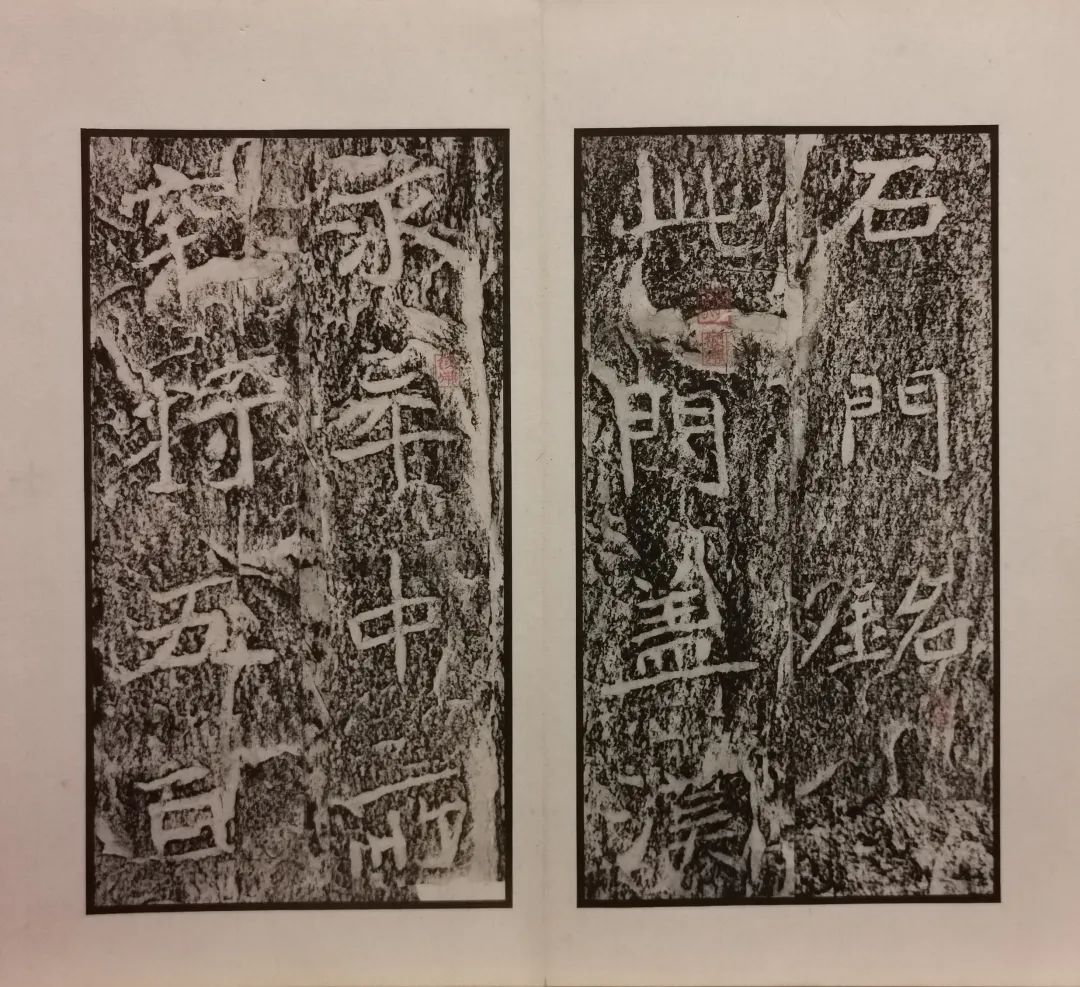
Shimen Inscription Book of Regular Script by Wang Yuan of the Northern Wei Dynasty
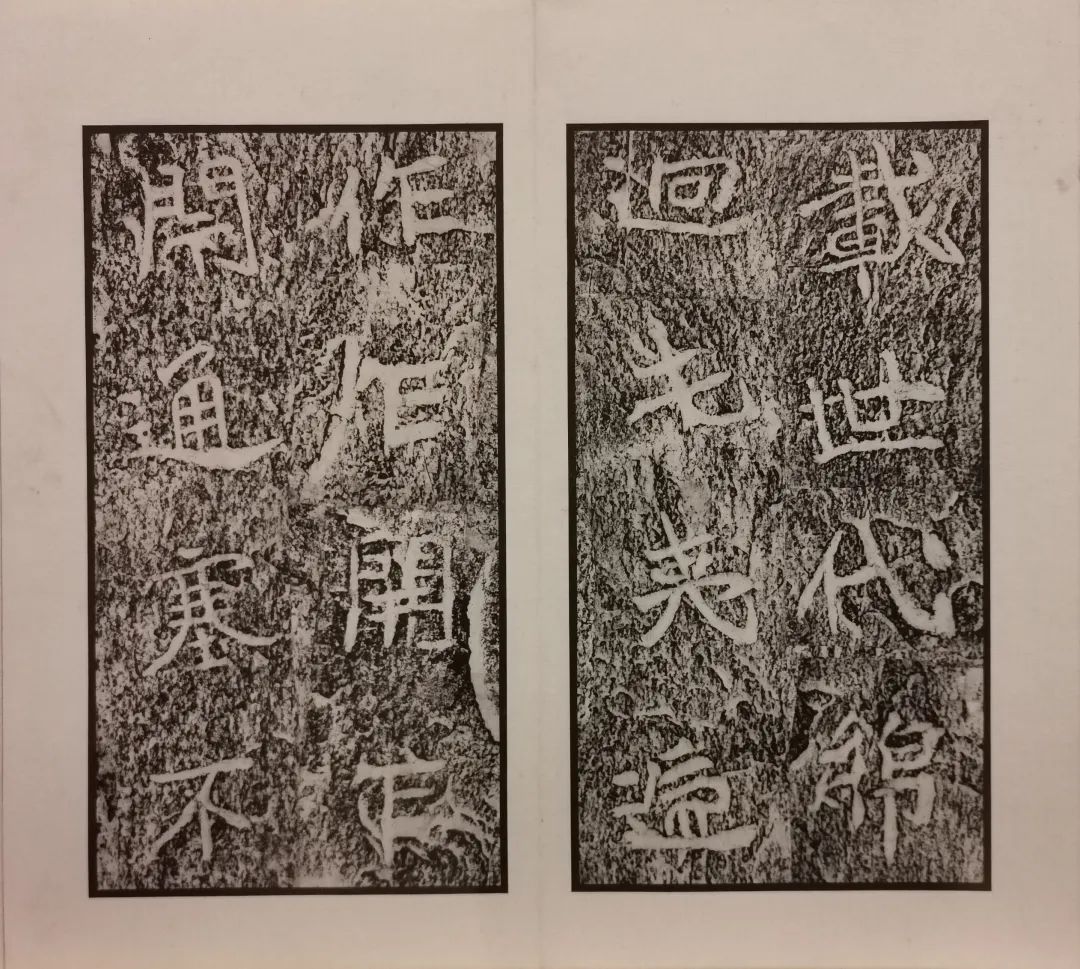
Shimen Inscription Book of Regular Script by Wang Yuan of the Northern Wei Dynasty
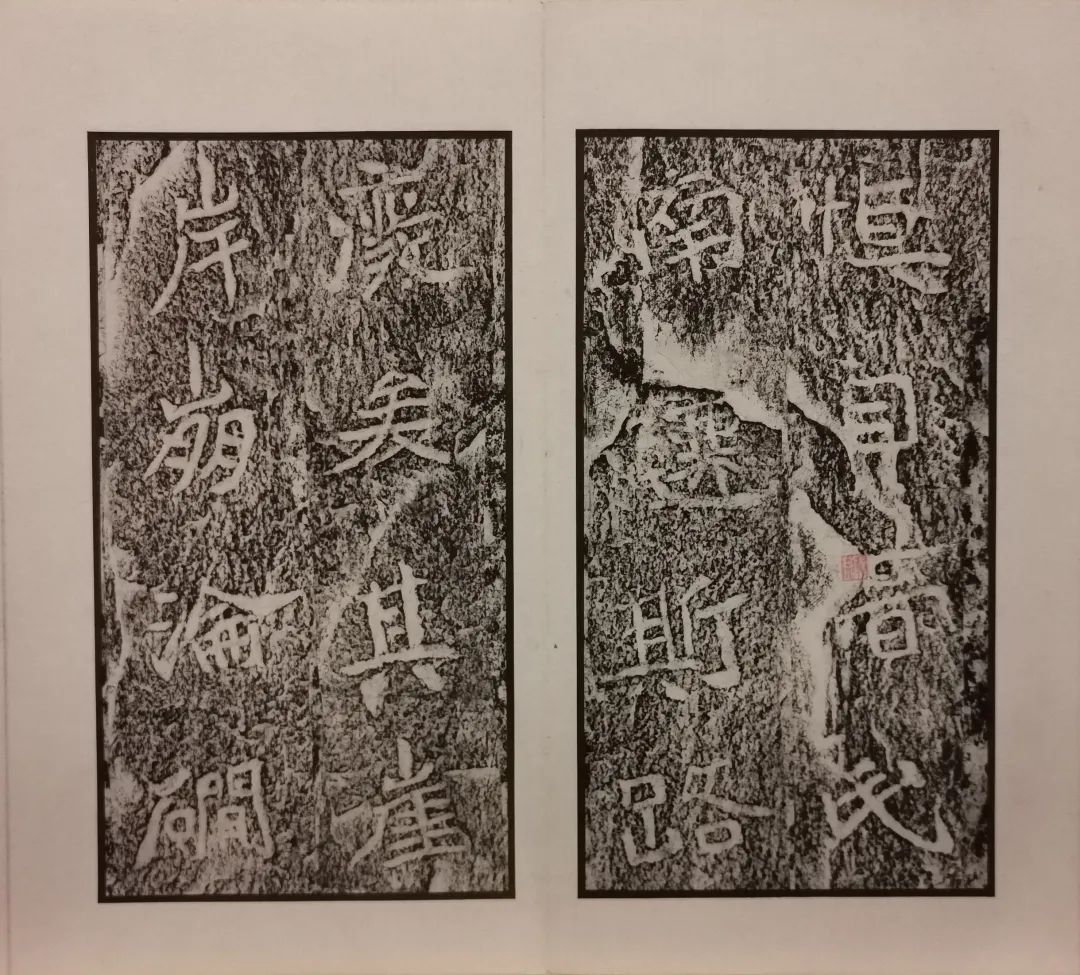
Shimen Inscription Book of Regular Script by Wang Yuan of the Northern Wei Dynasty

Shimen Inscription Book of Regular Script by Wang Yuan of the Northern Wei Dynasty
Wang Yuan (year of birth and death unknown), native of Taiyuan, signed by Guanliang and Qinzhou. The original stone was engraved in the second year of Yongping (509), on the east wall of Shimen, Baocheng, Shaanxi, recording the story of Yangzhi, the governor of Emperor Xuanwu of the Northern Wei Dynasty, reopening the old way of Baoxie. This work uses cursive as the regular script, and also has the meaning of seal script and official script, with a strange and flying state. The word "this" is not damaged, and it is a rubbing version in the early Qing Dynasty. It was once handed over to Tibet by Kang Youwei.
Ming Dynasty Yao Shou Running Script Praise to Zhang Boyu's Tomb Poem Volume

Ming Dynasty Yao Shou Running Script Praise to Zhang Boyu's Tomb Poem Volume
Yao Shou (1422-1495), courtesy name Gongshou, nicknamed Danqiu, Yundong Yishi, was born in Jiaxing, Zhejiang. Work poetry, good at calligraphy and painting, good at running cursive, learned from Song Ke and Zhao Mengfu, and was deeply influenced by Zhang Yu. This volume is a poem written by Qi Qi and his friends to pay tribute to Zhang Yu's tomb. The writing is thick and unrestrained. The book was written in the sixteenth year of Chenghua (1480), and the author was fifty-nine years old. Donated by Liu Jingji.
Ming Wang Guxiang seal script Ci Lin Qiongzao cited home page
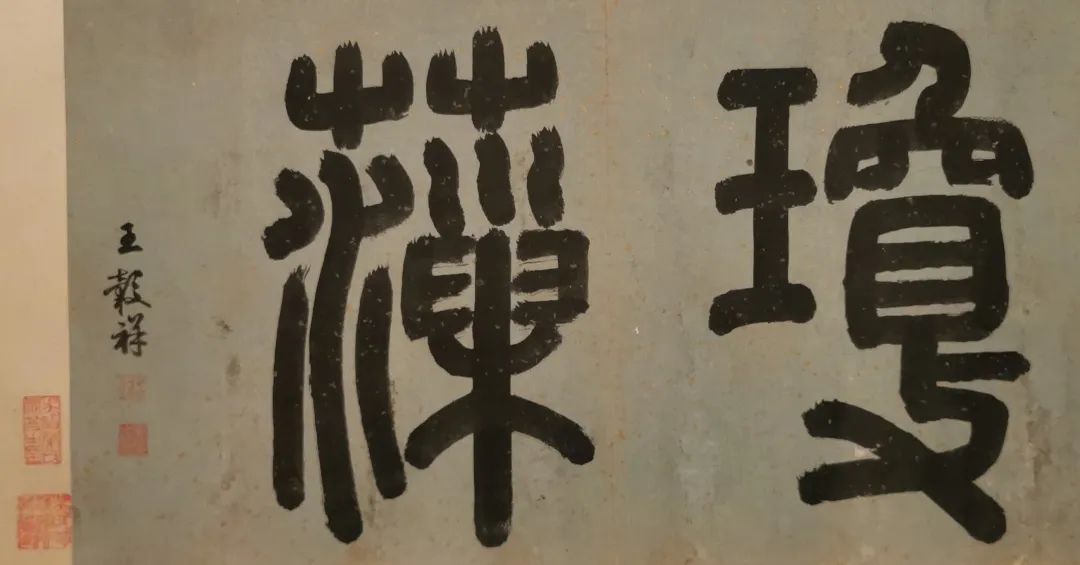
Ming Wang Guxiang seal script Ci Lin Qiongzao cited home page

Ming Wang Guxiang seal script Ci Lin Qiongzao cited home page
Wang Guxiang (1501-1568), courtesy name Luzhi and nickname Youshi, was born in Changzhou (now Suzhou, Jiangsu). In the eighth year of Jiajing (1529), he was a Jinshi, an official to Wailang, a member of the Ministry of Officials. He made friends with Wen Zhengming, was good at calligraphy and painting, and was good at sketching flowers. Calligraphy is imitated by Jin people, not limited to the style of "two kings", and is good at seal seal and imitation.
Ming Jin Cong Running Script Poetry Volume

Ming Jin Cong Running Script Poetry Volume
Jin Cong (1449-1501), courtesy name Yuanyu, self-named Chisong Shannong, was born in Nanjing, Jiangsu. He is good at calligraphy and painting. He was able to write big characters when he was young. This volume contains many poems from the book, with a dignified and elegant style. The book was written in the thirteenth year of Hongzhi (1500), and the author was fifty-two years old.
Biography of Gu Chunqian in Regular Script of Zhengming in Ming Dynasty
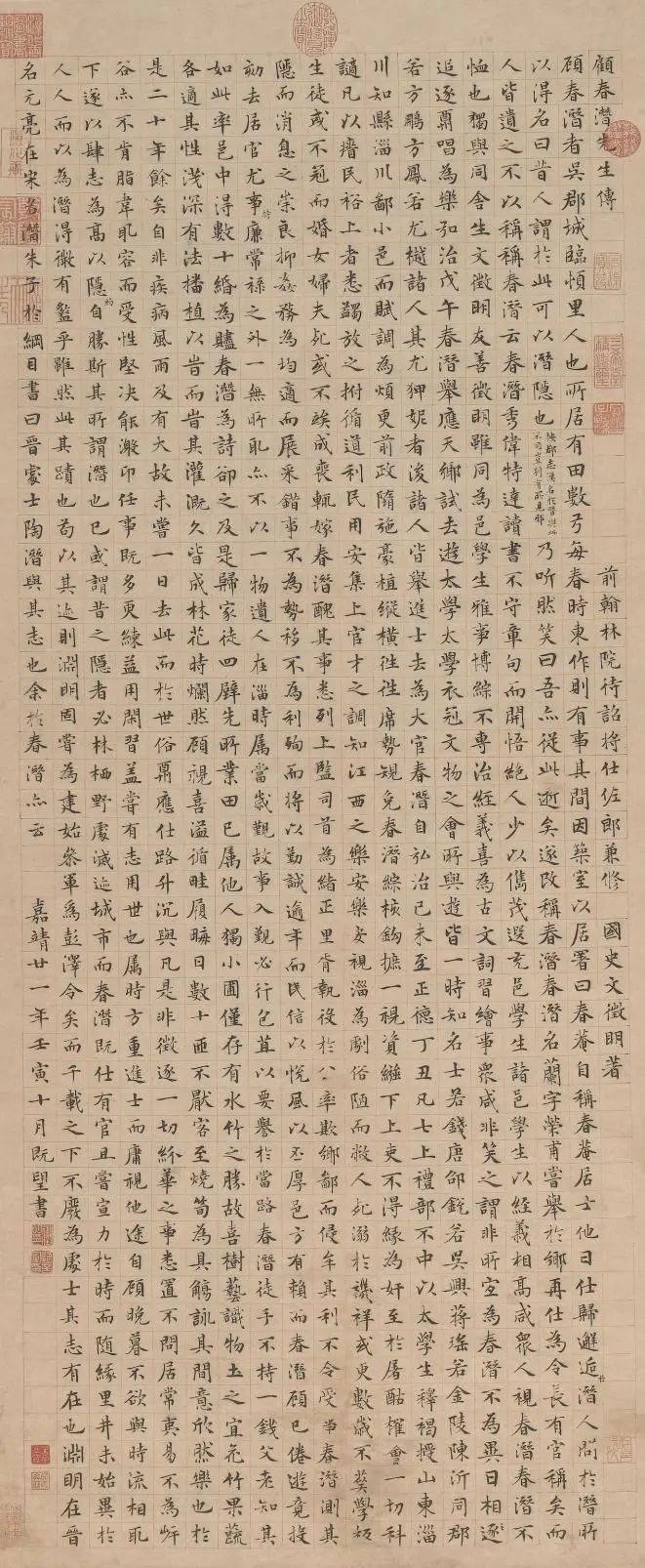
Biography of Gu Chunqian in Regular Script of Zhengming in Ming Dynasty
Wen Zhengming (1470-1559), originally named Bi, with the character of Ming, and later with the character of Xing, changed the character of Zhong, with the names of Hengshan Jushi, Ting Yunsheng, etc., from Changzhou (now Suzhou, Jiangsu). Gong calligraphy and painting, cursive learning "two kings", both have the charm of Zhao Mengfu. This axis is the biography of Gu Lan, a Suzhou hermit, written in the 21st year of Jiajing (1542). The author was seventy-three years old.
Cursive Script of Xing and Dong Dynasties of the Ming Dynasty

Cursive Script of Xing and Dong Dynasties of the Ming Dynasty
Xing Tong (1551-1612), styled Ziyuan, nicknamed Zhiwu, Fangshan Taoist, etc. Linyi (now Shandong Dezhou) people. He was able to write at the age of seven, and respected the two kings. He once said to himself: "I wrote in the right army, sitting and lying down for a few thirty years, before I mastered it." "Lai Qin Guan Tie" is engraved. Together with Dong Qichang, Mi Wanzhong and Zhang Ruitu, they are called "Xing Zhang Mi Dong".
Zheng Xie's running script in the Qing Dynasty is the axis of Mr. Ren Shan's poem
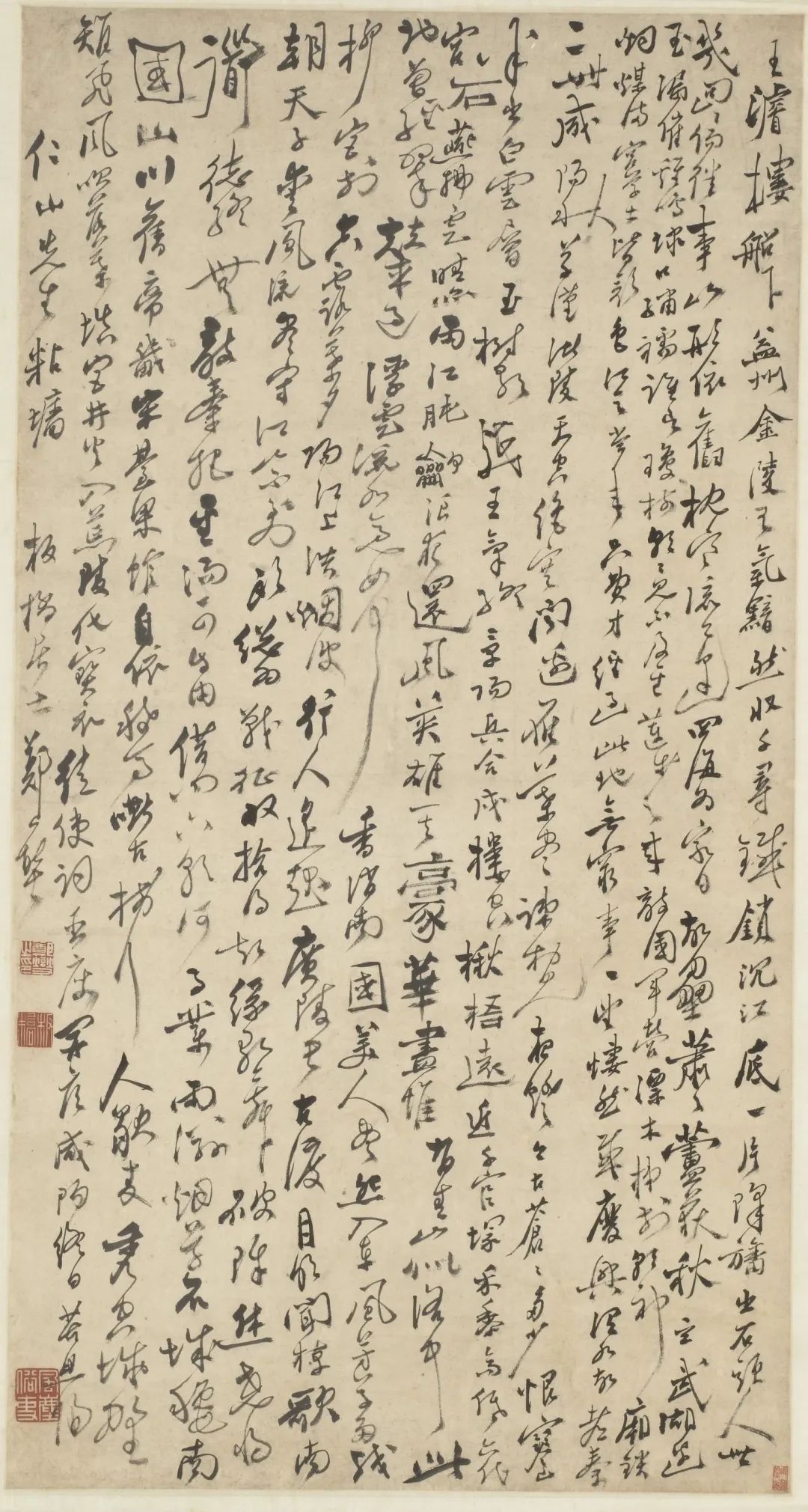
Zheng Xie's running script in the Qing Dynasty is the axis of Mr. Ren Shan's poem
Zheng Xie (1693-1765), courtesy name Kerou, nicknamed Banqiao, was born in Xinghua, Jiangsu. One of the "Eight Eccentrics of Yangzhou". Gong Lanzhu, good at calligraphy, created his own "six and a half calligraphy". This scroll records seven Tang poems, written freely and naturally, with obvious contrasts of weight, density and density in the composition, which has the interest of painting.
Qing Liang's Running Script Discussion Axis

Qing Liang's Running Script Discussion Axis
Liang Yan (about 1710-1788), courtesy name Wenshan, nicknamed Songzhai. A native of Bozhou, Anhui. He is good at regular script and cursive, and he worked hardest on Li Yong. He enjoyed the title of the book in Qianlong, and was called "the two Liangs in the north and the south" with Liang Tongshu. The stippling and painting in this book are solid, the shape of the characters is steady, and the momentum is vigorous. Donated by Qian Jingtang.
Qing Dynasty Jiangren running script Wu Zhen inscribed poem axis

Qing Dynasty Jiangren running script Wu Zhen painting poem axis
Jiang Ren (1743-1795), formerly known as Tai, styled Jieping, later got the ancient bronze seal of "Jiang Ren", so he changed his name, changed his name to Shantang, and was also known as Jiluojushi, Nvchuangshanmin, etc. Renhe (now Hangzhou, Zhejiang) people. Skilled in calligraphy and seal cutting, he is one of the "Eight Masters of Xiling". This painting is vigorous, elegant and simple, rich in ink color, and has a golden and stone atmosphere.
Qing Deng Shiru Seal Script Axis

Deng Shiru Seal Script Axis, Qing Dynasty
Deng Shiru (1743-1805), formerly known as Yan, styled Shiru, changed his style to Wanbo in order to avoid the name taboo of Emperor Jiaqing. A native of Huaining, Anhui. He is good at calligraphy and seal cutting, especially in seal and official script. This axis is "Da Shun Dance Gan Qi Zan" in "Seal Script <Four Praises of Yu Xin> Four Screens".
Qing Dynasty Zhao Zhiqian official script Han Jujube Order Liu Xiong Stele Axis

Qing Dynasty Zhao Zhiqian official script Han Suanzao Ling Liu Xiong Stele Axis
Zhao Zhiqian (1829-1884), courtesy name Suishu, nicknamed Bei'an, Wubo, etc. People from Shaoxing, Zhejiang. He is good at gold and stone seal cutting, calligraphy and painting. His books are integrated with inscriptions, and this axis is the "Han Jujube Order Liu Xiong Stele" of "Si Ti Shu Si Tiao Ping", which is in the style of official script. Zhang Xiangqing donated.
The works that have not appeared for a long time mainly include: Zhu Xi of the Southern Song Dynasty "Run Script on November 7th Post Page", Zhao Gou of the Southern Song Dynasty "Linyu Shinan Zhencao Thousand Characters Volume", Wu Zhichun of the Yuan Dynasty "Li Shu Zhu You Guangqin Cao Volume", Ming Wang Chong "Cursive Script Self-Script" Poetry Volume", Ming Xu Wei's "Cursive Script Poem Scroll", Qing Wang Duo's Cursive Script Poem Volume, Qing Zheng Yu's Li Script Poetry Scroll, etc.
Other famous products on display include "Mingtuo Eastern Han Dynasty Ritual Vessel Stele Album", "Mingtuo Tang Chu Suiliang Study Room Xuanling Stele Album", Su Shi of the Northern Song Dynasty "Run Script Appreciation to the Teachers' Thesis Volume", Mi Fu of the Northern Song Dynasty "Participating in Political Posts", Zhao Ji of the Northern Song Dynasty "Thousand-Character Regular Script Volume", Yuan Zhao Mengfu "Running Script Du Fu Qiuxing Poetry Volume", Yuan Yuji "Regular Script Liu Kai Shinto Inscription Volume", Ming Wang Shouren "Cursive Script Seven-character Poem Scroll", Qing Liu Yong "Running Script Volume", Qing Dynasty He Shaoji's "Seven Characters in Running Script" and so on.
Painting Gallery
There are many new calligraphy and painting masterpieces added to the exhibition of the Painting Museum, including 5 collections that have not been exhibited for a long time. Selected exhibits mainly include:
Southern Song Dynasty Anonymous Lotus Society Scrolls


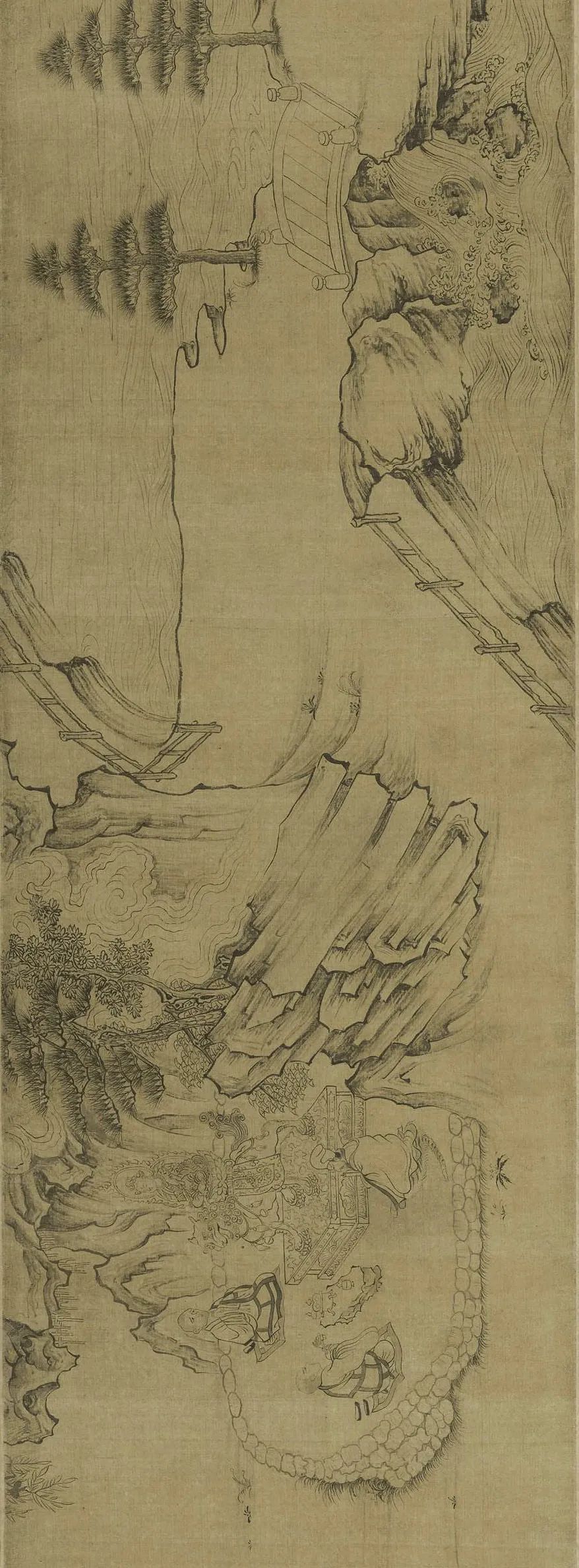

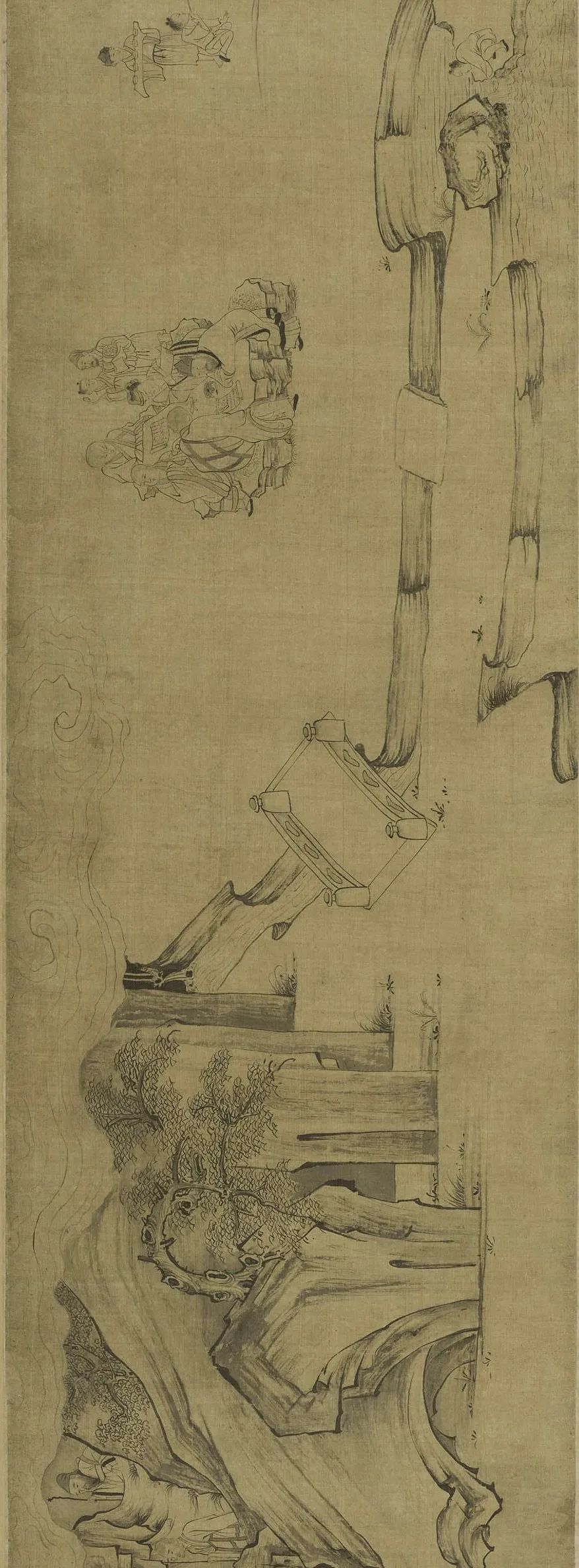
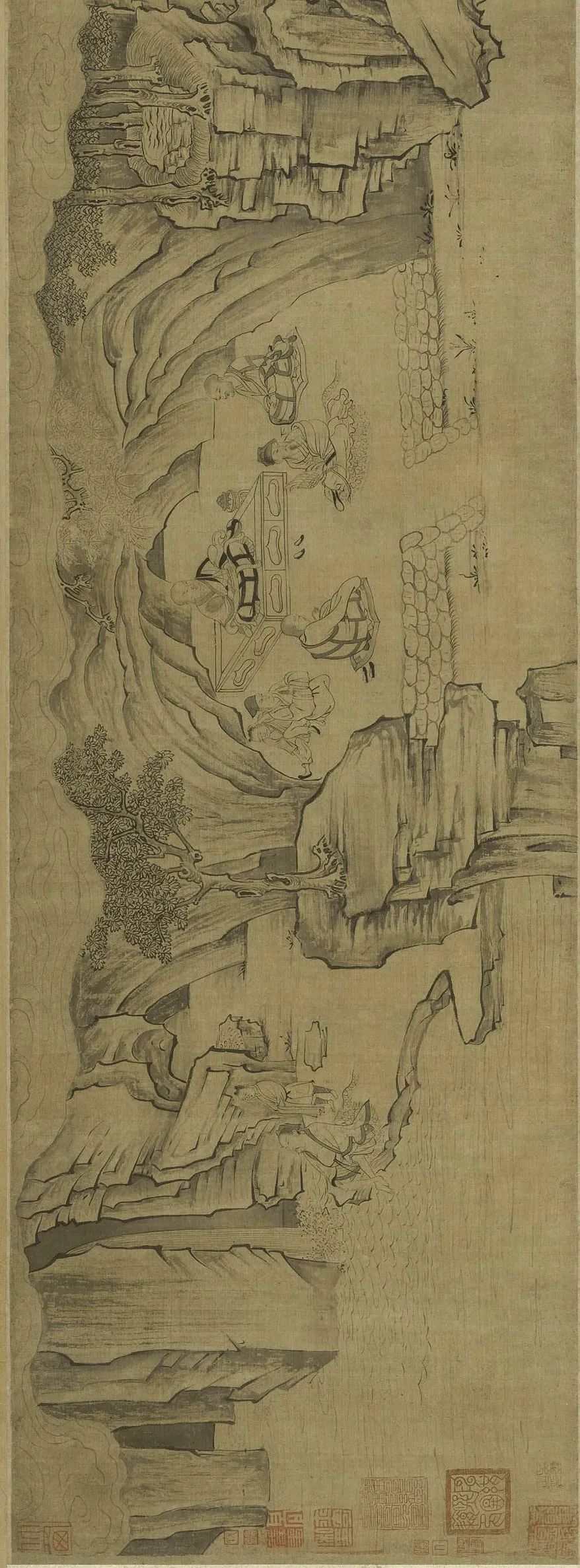
Scroll of Unknown Lotus Society in the Southern Song Dynasty
The picture depicts the story of Huiyuan (334-416), an eminent monk in the Eastern Jin Dynasty, who formed a society in Lushan Mountain, without the author's seal. It is a copy made by Li Gonglin based on Li Gonglin's "Lianshe Tu". The painting is divided into nine sections, in order: 1. Tao Yuanming, who rides the public, his son, disciple, and boy, who rides the public; 2. Xie Lingyun, who rides a horse, with two attendants; Lu Xiujing, standing next to the snake-walker, and one boy; fourth, three people who set up a golden statue of Manjushri to praise Buddhist deeds, Tan Chang, Dao Bing, and Zhou Xuzhi; fifth, two Buddhist monks, standing next to a Jesha; , Liu Chengzhi, Zhang Quan, Hui Rui, Hui Chi, Hui Yong, one person holding the scriptures, one boy, three people cooking tea, one person drawing water; 8. After the banquet, the speaker is Daosheng, and the listeners are Lei Cizong, Daojing, Tanxu, etc.; 9. Zhang Ye, a boy who washes his feet.
Scroll of Orchid, Bamboo and Stone by Zhao Mengfu in Yuan Dynasty

Scroll of Orchid, Bamboo and Stone by Zhao Mengfu in Yuan Dynasty
Zhao Mengfu (1254-1322), styled Ziang, nicknamed Songxue Taoist, was born in Wuxing (now Huzhou, Zhejiang). A famous calligrapher and painter in Yuan Dynasty. This picture was made in the sixth year of Daetoku (1302), and the author was forty-nine years old at the time.
Yuanxia Yongteng King Pavilion map page

Map page of Yongtengwang Pavilion in Yuan Dynasty
Xia Yong (fourteenth century AD), styled Mingyuan, and named Mingyuan in one of his works, was born in Qiantang (now Hangzhou, Zhejiang) and was a fine painter. There are scattered pages of paintings and pavilions in many worlds. This picture is a long sky with autumn water, towering towers and emerald greens, parallel collections of literati, and singing and singing. Buildings and boats are drawn with a straightedge, and the boundaries are drawn precisely, complemented by arbors, boulders, and small scenery of distant mountains, which are outlined with fine brushwork. On the upper end is a small letter from Tang Wangbo's "Preface to the Pavilion of the King of Teng", which has not been signed, and is sealed with "Xia Mingyuan Seal".
Ming Wen Zheng Ming Jin Jiao Luo Photo Scroll

Ming Wen Zheng Ming Jin Jiao Luo Photo Scroll
Wen Zhengming (1470-1559), originally named Bi, styled Zhengzhong, nicknamed Hengshan and Tingyunsheng, was born in Changzhou (now Wu County, Jiangsu). He is good at painting landscapes, flowers, orchids and bamboos, and is one of the "Four Masters of Wumen". This picture was made in the eighth year of Hongzhi (1495), the author was 26 years old at the time, and there is an important title in the 24th year of Jiajing (1545) at the end. Donated by Gong Shubiao.
Mingwen Boren Jinling Landscape Atlas
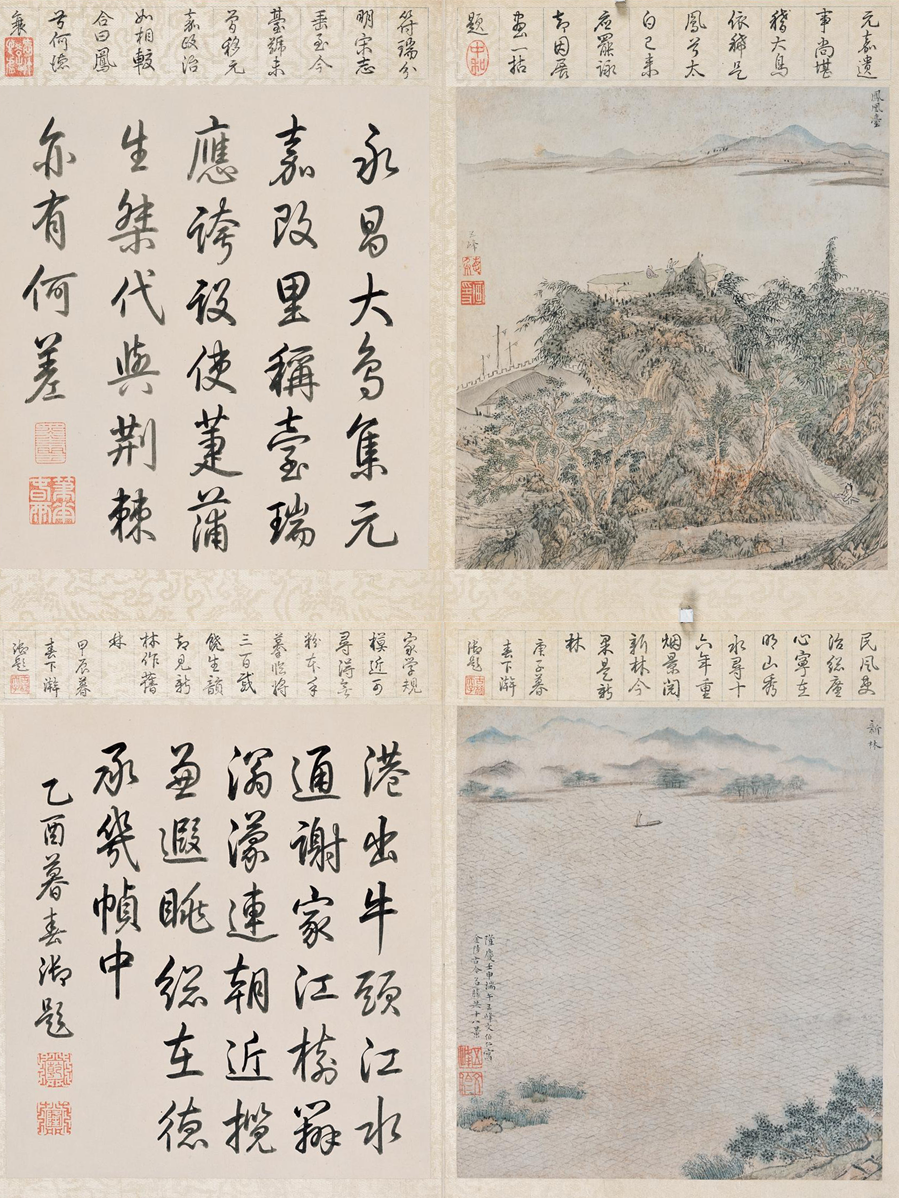
Boren Jinling Landscape Atlas in Ming Dynasty
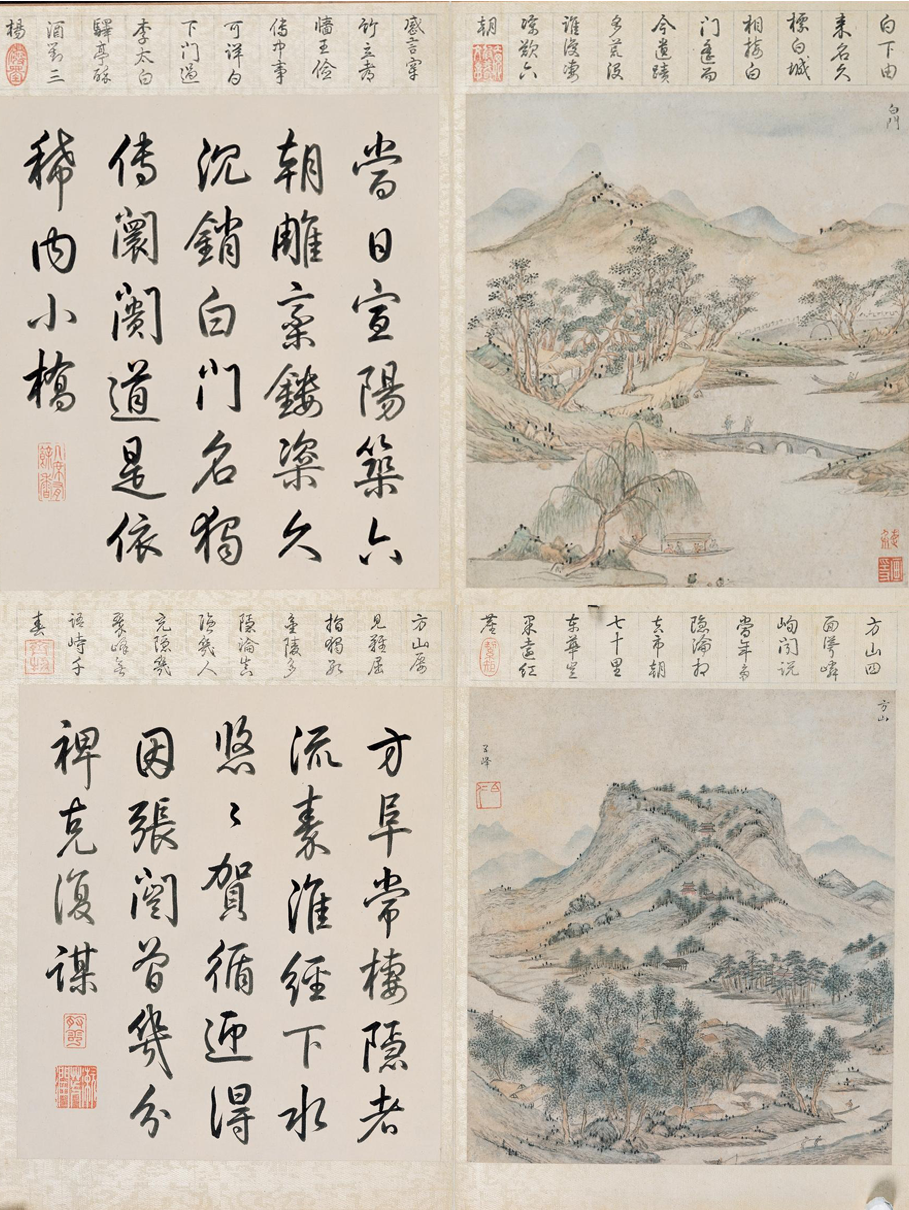
Boren Jinling Landscape Atlas in Ming Dynasty
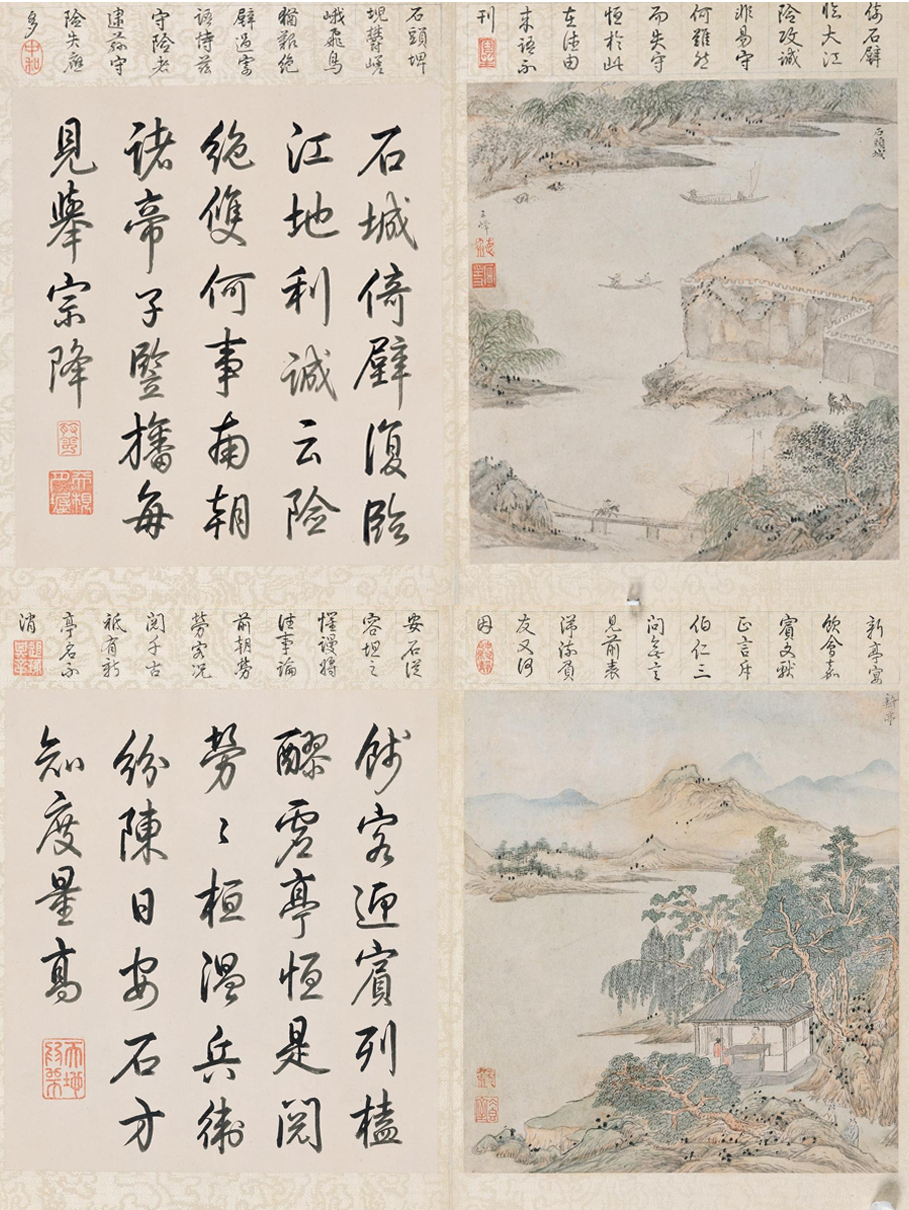
Boren Jinling Landscape Atlas in Ming Dynasty
Wen Boren (1502-1575), courtesy name Decheng, nickname Wufeng, was born in Changzhou (now Suzhou, Jiangsu Province), nephew of Wen Zhengming. Good at painting landscapes and figures. This album, which depicts the scenic views of Jinling, consists of 18 pages, and each page has a Qianlong theme, which is neat and dense. Composed in the sixth year of Longqing (1572), the author was seventy-one years old at the time, and it was a masterpiece in his later years.
Qing Wang Shimin Antique Landscape Book
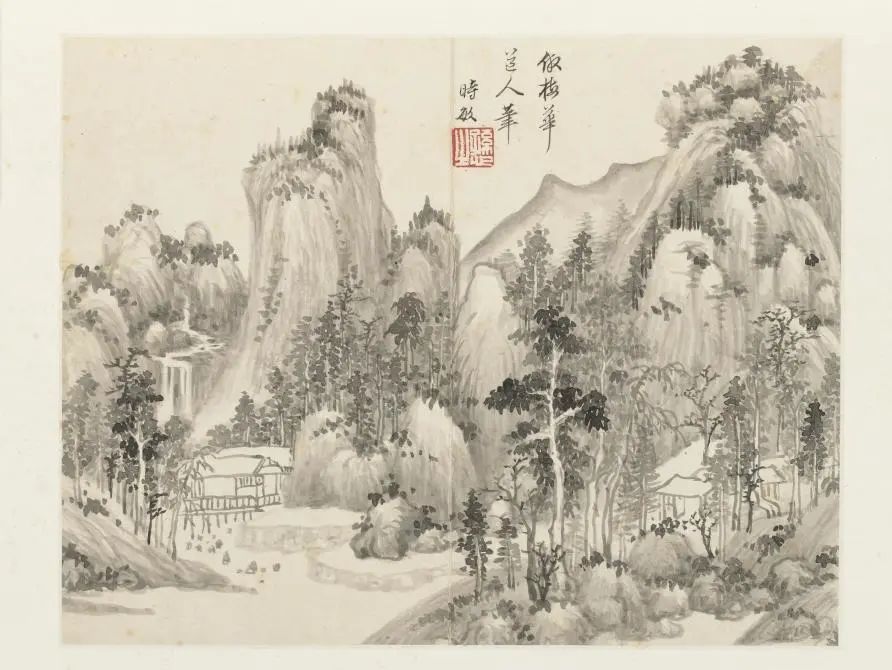
Qing Wang Shimin Antique Landscape Book

Qing Wang Shimin Antique Landscape Book

Qing Wang Shimin Antique Landscape Book
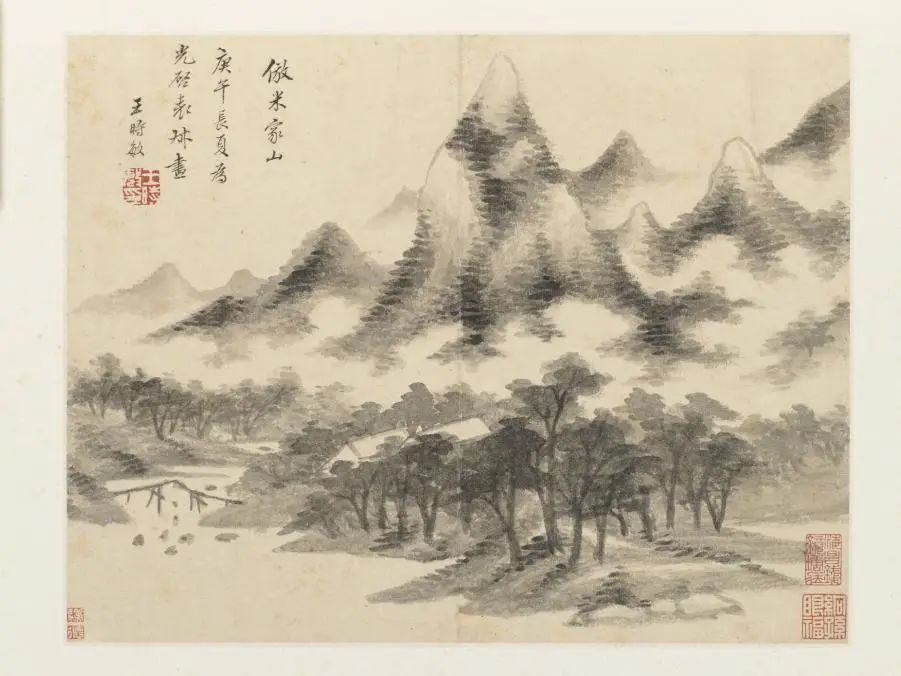
Qing Wang Shimin Antique Landscape Book
Wang Shimin (1592-1680), courtesy name Xunzhi, nicknamed Smoker, was born in Taicang, Jiangsu. Ming Yin served as Shaoqing in Taichang Temple, but he did not serve in Qing Dynasty. He lived in Xitian Bieye late, also known as Xilu Old Man. He is good at landscapes and is the first of the "Six Schools of the Early Qing Dynasty". This book is "Guangqi" with ten antique landscapes, each imitating the brushwork of Dong Yuan, Ermi, Ni Zan, Wu Zhen, and Huang Gongwang, with clear and moist brush and ink. Written in the third year of Chongzhen (1630), the author was thirty-nine years old at the time, making it a masterpiece in his early years.
Qing Wang Yuanqi Antique Landscape Book
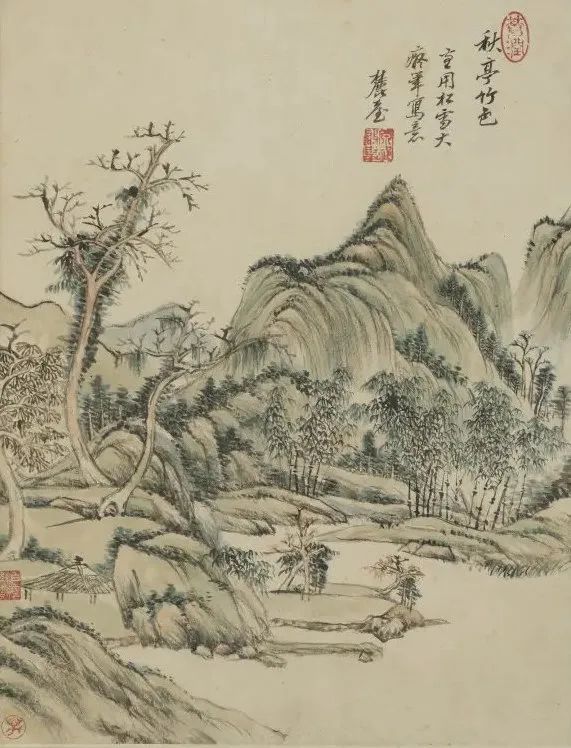
Qing Wang Yuanqi Antique Landscape Book

Qing Wang Yuanqi Antique Landscape Book
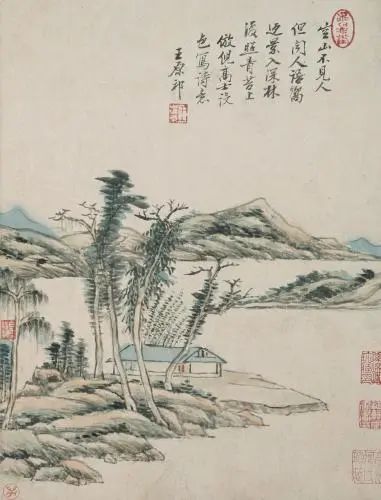
Qing Wang Yuanqi Antique Landscape Book
Wang Yuanqi (1642-1715), styled Maojing, nicknamed Lutai, Shishi Taoist, was born in Taicang, Jiangsu. Sun of Wang Shimin. He is good at landscapes and is one of the "six masters in the early Qing Dynasty". This book is about the landscapes of Song and Yuan Dynasties, such as Ju Ran, Jiang Guandao, Zhao Mengfu, Gao Kegong, Ni Zan, Wu Zhen, Wang Meng, etc., one of which is made to imagine Huang Gongwang's famous work "Autumn Mountain Picture". Donated by Sun Yufeng.
Qing Dynasty Shen Quan Qi Mei Tu Axis
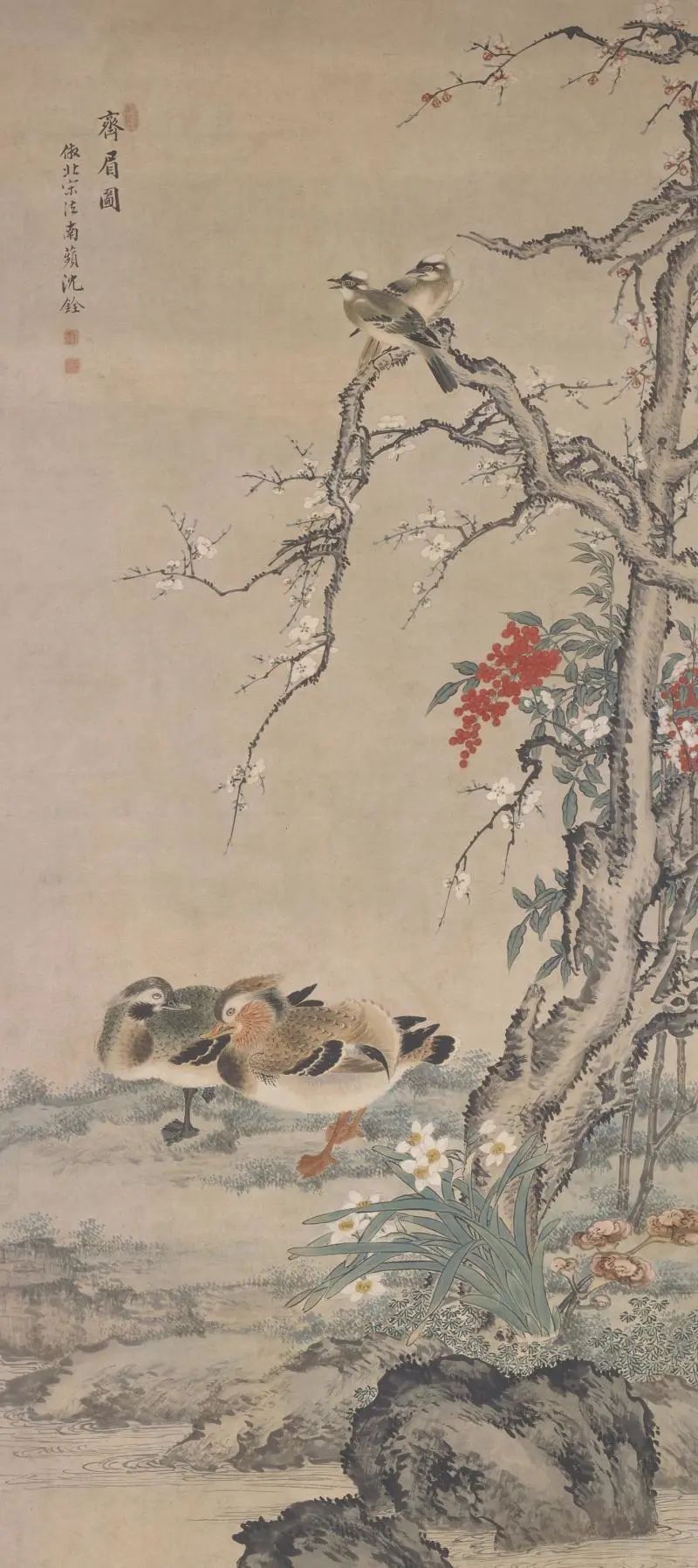
Qing Dynasty Shen Quan Qi Mei Tu Axis
Shen Quan (1682-after about 1762), courtesy name Hengzhi, nicknamed Nanping, was born in Wuxing (now Huzhou, Zhejiang), and was born in Deqing. Gonghua paintings of flowers, feathers, and animals are known for their precision and beauty. This picture is colored by mandarin ducks and white-headed bulbuls, under the plum blossoms by the water, sleeping and amphibious, which is more freehand than its richness and all the way. It is self-titled "imitating the method of the Northern Song Dynasty". Donated by Yang Yumian.
Axis of Desiring Rain in Zhangying Xia Mountain in Qing Dynasty

Axis of Zhangying Xiashan Desiring Rain in Qing Dynasty
Zhang Yin (1761-1829), courtesy name Baoya and nickname Xi'an, was born in Dantu (now Zhenjiang, Jiangsu). Good at painting landscapes, flowers, bamboo and stone. This picture is set and colored as a grass pavilion on the Yanjiang River. One person sits alone, overlooking the mountains and clouds on the river. The self-title is a golden mountain for summer vacation, when the night rain begins, I wrote it for my friends on a whim. Written in the 25th year of Jiaqing (1820), the author was 60 years old at the time.
Period of Permanent Exhibition of Chinese Painting and Calligraphy in Past Dynasties: April 15, 2023-October 8, 2023
Chinese Calligraphy Museum
Shimen Inscription Book of Regular Script by Wang Yuan of the Northern Wei Dynasty
Ming Dynasty Yao Shou Running Script Praise to Zhang Boyu's Tomb Poem Volume
Ming Wang Guxiang seal script Ci Lin Qiongzao cited home page
Ming Jin Cong Running Script Poetry Volume
Biography of Gu Chunqian in Regular Script of Zhengming in Ming Dynasty
Cursive Script of Xing and Dong Dynasties of the Ming Dynasty
Zheng Xie's running script in the Qing Dynasty is the axis of Mr. Ren Shan's poem
Qing Liang's Running Script Discussion Axis
Qing Dynasty Jiangren running script Wu Zhen painting poem axis
Deng Shiru Seal Script Axis, Qing Dynasty
Qing Dynasty Zhao Zhiqian official script Han Suanzao Ling Liu Xiong Stele Axis
Gallery of Chinese Paintings of Past Dynasties
Scroll of Unknown Lotus Society in the Southern Song Dynasty
Scroll of Orchid, Bamboo and Stone by Zhao Mengfu in Yuan Dynasty
Map page of Yongtengwang Pavilion in Yuan Dynasty
Ming Wen Zheng Ming Jin Jiao Luo Photo Scroll
Boren Jinling Landscape Atlas in Ming Dynasty
Qing Wang Shimin Antique Landscape Book
Qing Wang Yuanqi Antique Landscape Book
Qing Dynasty Shen Quan Qi Mei Tu Axis
Axis of Zhangying Xiashan Desiring Rain in Qing Dynasty
